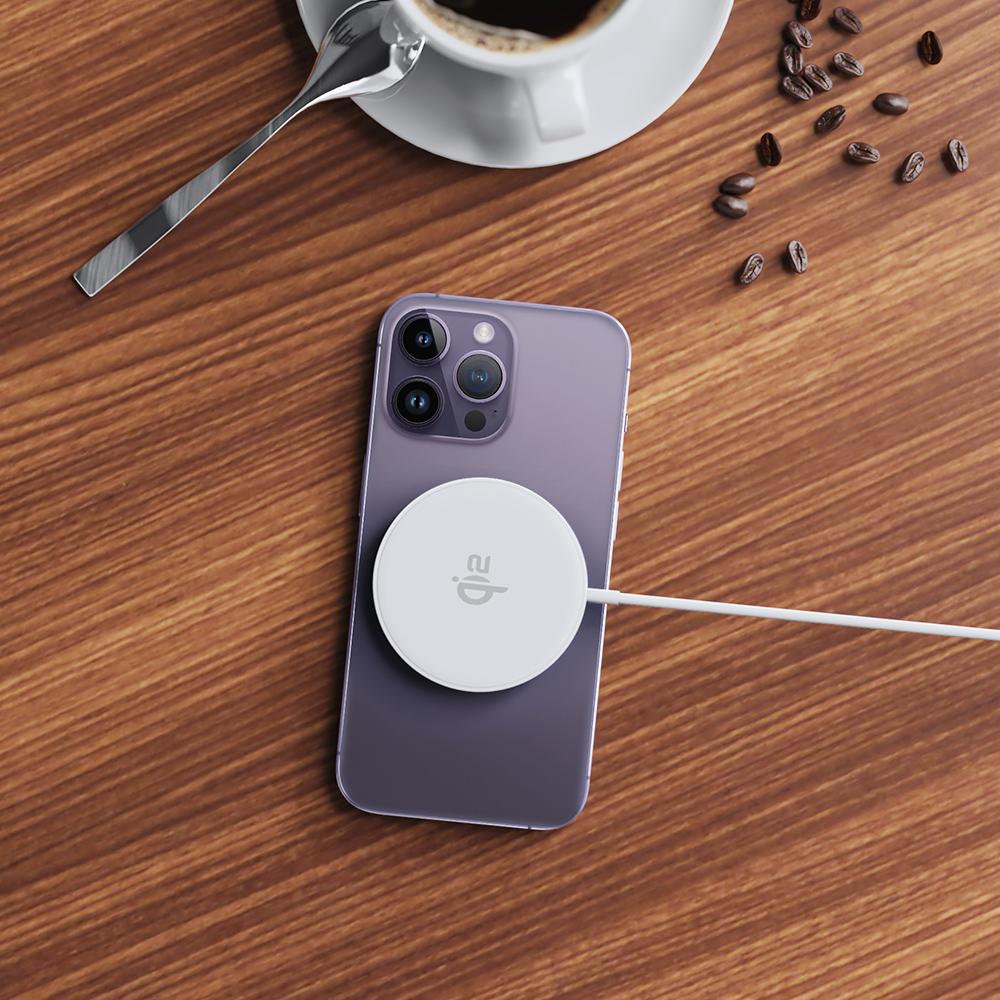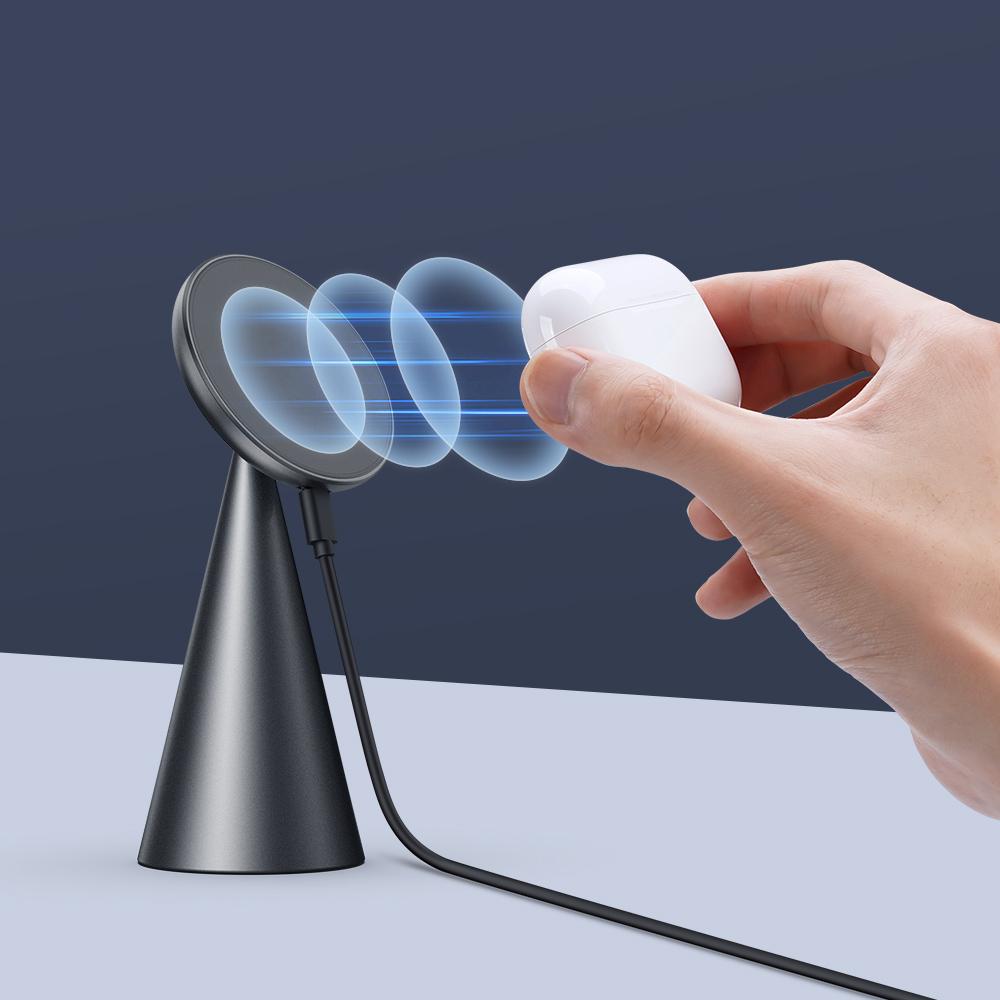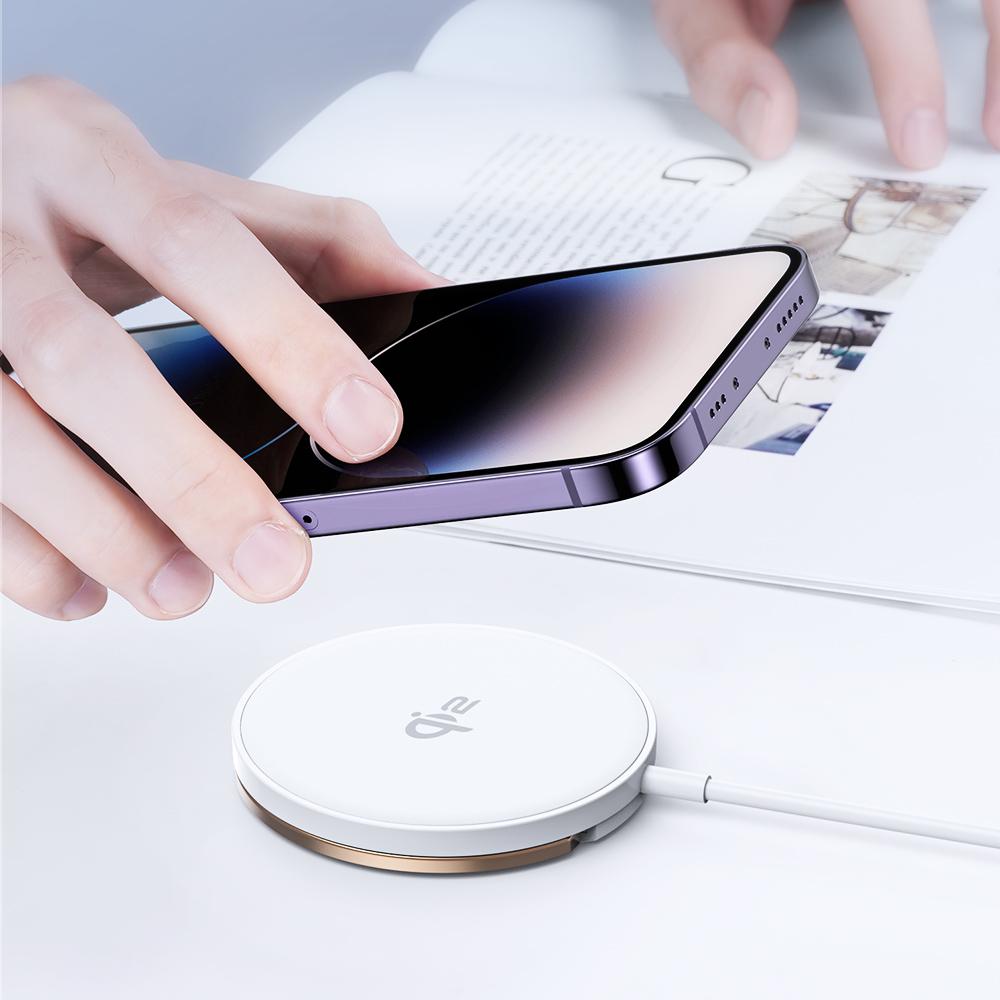Although we can use a MagSafe charger to charge an Android phone without magnets, it is really not that convenient compared to an iPhone with a magnetic charging function. In particular, the charging coil of some Android phones is not in the middle of the phone, and it is difficult to align with the charging coil of the MagSafe charger. Besides buying a case with a magnetic ring for your Android phone, is there any other solution?
Qi2, a new generation of Qi wireless charging standard released by the Wireless Power Consortium at CES 2023, solves this problem.

To put it simply, as a promoter of the Qi wireless charging standard, the cross-brand Wireless Power Consortium is responsible for formulating wireless charging specifications for electronic products, so that Qi-format wireless charging can be applied to different products. That’s right, although Qi has become synonymous with wireless charging in recent years, in the early days of wireless charging, Qi was just one of the formats in wireless charging. Competing with Qi is the PMA (Power Matters Alliance) and A4WP (Alliance for Wireless Power).
The Qi2 announced this time is the first major version update of Qi announced by the Wireless Power Consortium (WPC) after the release of Qi1.0 in 2010. In order to solve the problem of unclear charging position in Qi1.X version, WPC absorbed the Magnetic Power Profile (magnetic power distribution map) submitted by Apple as the core standard of Qi2, and the charging power of Qi2 was also increased to 15W.
In other words, in the future, as long as the smart devices marked with Qi2 charging are adopted, whether it is an Android mobile phone, a wireless headset, a gaming mouse or a Bluetooth speaker, it can be charged with a MagSafe charger.
But here comes the problem again. Android mobile phone brands have already achieved 100W wireless charging. What is the significance of this 15W Qi2?
Make your Android phone the icing on the cake
First of all, Android users can be assured that supporting Qi2 will not lock your phone’s wireless charging power to 15W. Just like the PD charging standard, Qi2’s 15W is just its lower limit. It doesn’t mean that the mobile phone can only be 15W. If you want to achieve higher power wireless charging, you can develop your own charging solution.
In fact, all Android mobile phone brands do this: 100W wireless charging has its own format, and it must be realized by a special mobile phone with a special charger. For example, if you put the 100W MIX4 on an unsupported high-power wireless charger, you can only achieve the lowest Qi2 power of 15W.
So why does Qi2 still include MagSafe technology? In addition to the reason that “Apple is a member of WPC”, we believe that the addition of MagSafe magnetic adsorption will also help the overall development of Qi2.
First of all, as Apple has advertised many times, magnetic adsorption can help users quickly locate wireless charging devices in a non-inductive way, so that mobile phones can accept wireless charging in a way that maximizes efficiency. If you have used the early Moto 360, you should have an impression of the wireless charging base that can’t be placed in the right place. From the fact that the subsequent second-generation Android wear devices switch to magnetic adsorption charging, it is not difficult for us to see the importance of magnetic adsorption for wireless charging devices.
But if we take a step back, the addition of magnetic adsorption is just icing on the cake for Android phone brands. What really improves the charging environment is a series of third-party small digital products that support wireless charging, such as wireless headphones or Kindle.
Taking TWS earphones as an example, due to the separate design of the charging box, the center of the charging coil of TWS earphones is usually not in the visual center of the product. Since manufacturers generally do not mark the coil position of the product, this makes it difficult for users to find the best charging position for these small electronic products. Some users don’t know that they should put the button side down when they charge AirPods Pro.

The addition of magnetic adsorption makes users no longer need to carefully test the charging position of wireless charging, just like the wireless mouse charger with magnetic adsorption, the mobile phone and earphones can be quickly and automatically positioned by placing them on the wireless charging. In addition, the addition of magnetic adsorption allows the headset to use the vertical wireless charger of the mobile phone, which is more versatile.
Apple is the biggest winner
But then again, although the emergence of magnetic adsorption has improved the industry versatility of wireless charging, Apple has always been the biggest beneficiary of magnetic adsorption as the Qi2 standard.
Since Apple released MagSafe for mobile phones and earphones, MagSafe has quickly become the new favorite in the Apple ecosystem. Brands such as Belkin and Baseus have also launched a variety of MagSafe charging products in a short period of time, even making Apple’s Made for MagSafe (MFM) accessories certification system is more popular. Unfortunately, because MagSafe does not have too many technical barriers at the hardware level, as long as a few magnets are arranged, a large number of third-party brands can bypass MFM certification and launch magnetic accessories.
The entry of MagSafe into Qi2 will bring the initiative back to Apple. In the Qi2 era, since all accessories support magnetic adsorption, the selling point of MagSafe will also change from magnetic adsorption to the unique high power of MFM certification and the data transmission function that may be added in the future.
In the MFi era, the “pop-up” phenomenon that may occur when using a non-MFi-authorized data cable to charge a mobile phone, we found that even in the era when the iPhone switched to USB-C, Apple can still “exclusively” limit user charging behavior through MagSafe .

To give the worst example: Technically speaking, Apple is fully capable of using the private fast charging protocol like other brands to limit the charging power of non-MFM magnetic adsorption chargers to the familiar 5V/1A or even 5V/0.5A. Opportunities prompt users to purchase wireless chargers certified by Apple’s MFM.
I know this is a bit alarmist, but in the Android camp, it is nothing new to limit the charging power of PD to promote the fast charging protocol of its own brand. We have tested the non-private charging power of mainstream brands of mobile phones. Among them, the flagship mobile phone of a certain brand in the first half of the year set a “new record” of 2.5W charging power.
For Apple, MagSafe is actually the next Lightning interface, which is open to WPC, Qi2 and third-party brands, but fully controlled by Apple. For example, shortly after the release of the iPhone 12, Belkin, which has a close relationship with Apple, has launched a number of charging products that adopt the MagSafe standard, and more third-party accessory brands will join the MagSafe camp in the future.
For third-party brands, the launch of MagSafe products can adapt to Apple’s products on the one hand, and on the other hand, they can also obtain safer and more usable Qi wireless charging technology, and this technology can also be applied to support Qi wireless charging on other mobile phones, it can be said to kill three birds with one stone.
In addition to being used to build an ecological kingdom, MagSafe actually has a more important task, which is to cultivate users’ operating habits for wireless charging and pave the way for Apple’s non-porous. Since the invention of mobile phones, mobile phones have been developing on the road of integration. From removable batteries to eSIMs, brands are looking to reduce moving parts inside phones and make them non-porous.
After all, non-porous means that the iPhone can justifiably get rid of the limitations of USB-C, and the iPhone’s wireless fast charging, data storage and even hardware maintenance will be completely controlled by the Apple system. At that time, users will naturally have no reason not to turn on iCloud cloud synchronization and buy Apple Care+.

